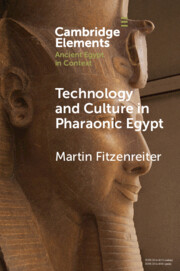Element contents
Technology and Culture in Pharaonic Egypt
Published online by Cambridge University Press: 21 March 2023
Summary
- Type
- Element
- Information
- Online ISBN: 9781009070300Publisher: Cambridge University PressPrint publication: 13 April 2023
References
- 3
- Cited by

